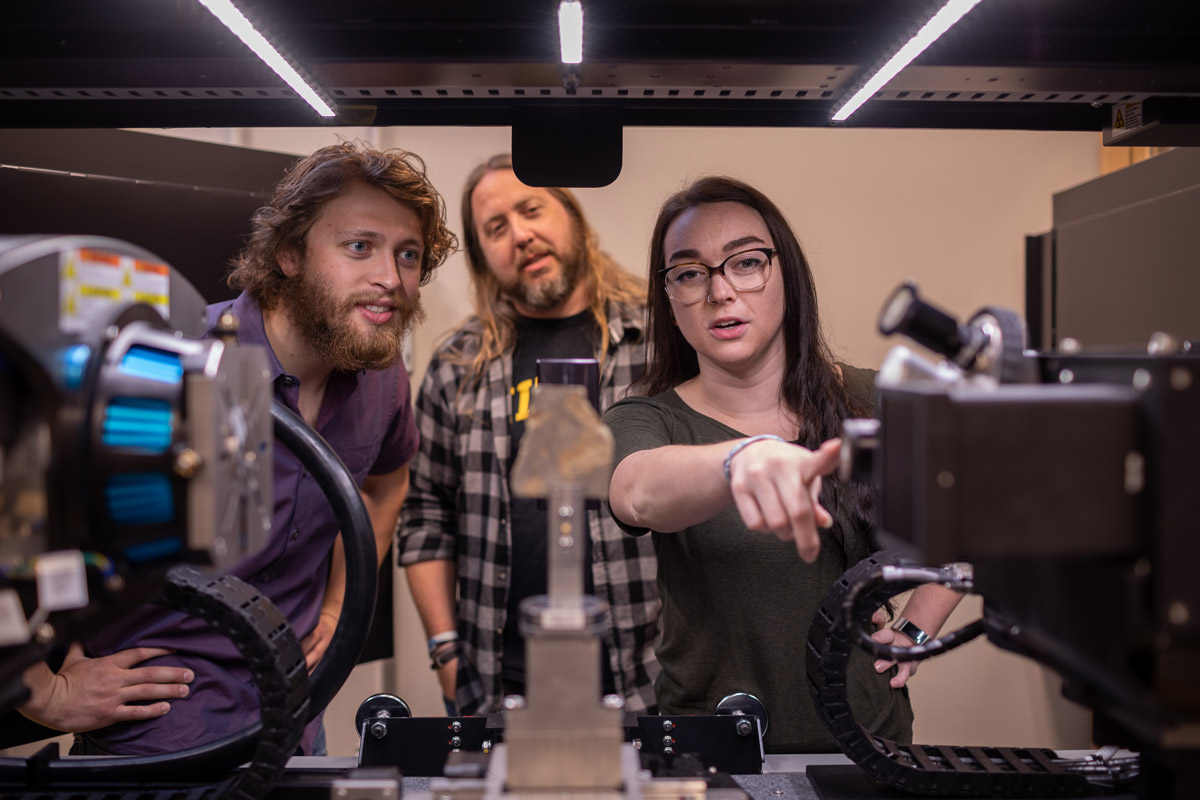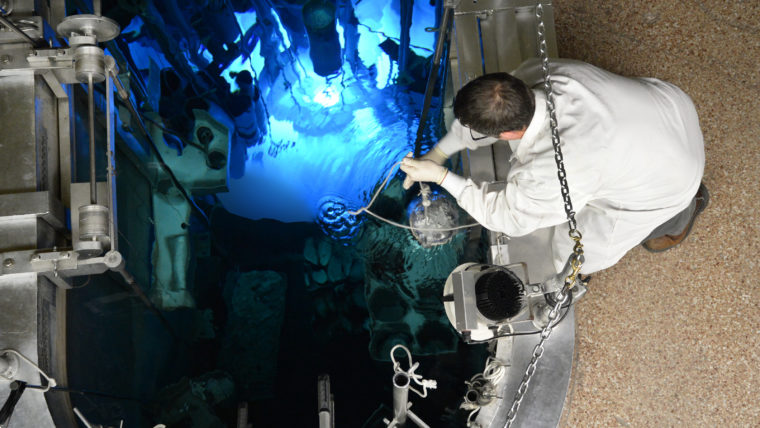The Department of Geological Sciences has a range of research labs and instrumentation used in faculty, graduate student and undergraduate research projects. Major in-house facilities include:
The lab houses a coulometric titration system with acid-extraction and total-combustion modules for determinations of total organic and inorganic C, two automated titration systems, two extraction lines for the analysis of reduced S (concentrations and isotopic compositions), a UV-visible spectrophotometer, an ion chromatograph and a Millipore water system.
The Department houses a computer automated, cold cathode, CITL Mk5 mounted on an Olympus BX51 petrologic microscope for optical CL studies. Cathodoluminescence (CL) is the emission of light from material when it is irradiated with electrons. The technique is used for imaging spatial variations in the trace element composition of natural and synthetic materials. CL is used in the examination of minerals in sedimentary, igneous and metamorphic rocks to reveal growth zoning and microstratigraphy, which are useful when chemically reconstructing the history of fluid-rock interactions. CL is also useful to detect recrystallization of minerals that may not be otherwise observable using standard transmitted light microscopy.
The lab features a Linkham THMSG 600 computer-controlled heating-freezing stage on a modified Olympus BX51 microscope. We also have a Fluid INC gas-flow stage for analysis of fluid inclusions from-198° to +700°C, including CCTV monitoring and recording of fluid inclusionphase equilibria.
The collection includes 38,500 books, 320 periodicals and 100,000 maps and charts. Computerized GeoRef and Water Resources Abstract search systems and software for reading of digital maps are also housed in the library. website >>
Computational resources include an 320-core PC cluster in our geophysical computer lab and a campus level high performance computing cluster, as well as a variety of geophysical and geological software packages. We use these reources to model earths processes and invert geophysical data to study the underlying processes in detail.
The department houses a fully equipped rock preparation lab, with 10” and 7” water-cooled trim saws, a 24” oil-cooled slab saw, an upright cab grinder, and a water-cooled variable-speed drill press. Slow saws, polishing/grinding wheels, and a vacuum oven are also available.
The Biogeochemistry Isotope Lab contains separate preparation space and two isotope ratio mass spectrometers (IRMS) with associated peripherals. The first IRMS system consists of an individual acidification carbonate device connected to an IRMS through a dual inlet interface. The second system consists of a gas chromatograph and two elemental analyzers connected in continuous flow mode to the IRMS through their respective interfaces. This instrumentation allows analysis of small samples with high throughput for a variety of isotope systems including: carbon and oxygen in carbonate-containing samples, carbon and nitrogen in organic samples (either sequentially on specific compounds separated by the GC or simultaneously on bulk material), hydrogen and oxygen in water samples, and oxygen in phosphates and sulfates. The lab is maintained by a part time technician and contains separate extraction lines for off line analyses as well as the centrifuges, balances, ovens, a fume hood, reagents, and preparation materials/space for converting bioapatite to Ag3PO4.
The X-ray microanalysis laboratory is a Zeiss microscopy facility, with two primary instruments available to researchers: a Sigma 500 VP scanning electron microscope (SEM) and a Versa 510 X-ray microscope (XRM or µCT).
The Sigma 500 VP SEM is a field emission, variable pressure electron microscope, outfitted with dual, co-planar Bruker energy dispersive X-ray spectrometers; a Bruker microspot X-ray fluorescence source; and a suite of high-definition imaging detectors. The imaging detectors include an in-lens duo detector for high magnification secondary and backscattered electron imaging, a retractable 5-segment high-definition backscattered electron detector, a standard Everhart-Thornley detector, and a cascade detector for low vacuum imaging.
The Versa 510 XRM is a premier solution for non-destructive, three-dimensional volume imaging. With two-stage magnification synchrotron-caliber optics (including 0.4X, 4X, and 20X objectives), this XRM achieves 0.7 micrometer true spatial resolution with minimum achievable voxel size of 70 nanometers, even for larger sample sizes. The X-ray source is powerful enough (with an operation range from 30–160 kV) and the system provides innovative phase contrast solutions to enable accommodation across a variety of sample materials, from soft (or low atomic weight) materials, such as bones, polymers, and soft tissues, to hard (or high atomic weight) materials, like metals, alloys, and rocks.
To discuss potential analyses and schedule use of these instruments, please contact Dr. James Schiffbauer or Dr. Tara Selly. To find out more about these facilities you can access the official website here.
The Department of Geological Sciences, in partnership with the MU Research Reactor, Department of Chemistry, and Christopher Bond Life Sciences Center, recently received funding from the National Science Foundation to build a laser ablation multicollector inductively coupled plasma mass spectrometer (LA-MC-ICPMS) laboratory at the Research Reactor. The instrumentation will consist of a NuPlasma high resolution multicollector mass spectrometer coupled to an Analyte 193 nm ultra-short pulse excimer laser. The targeted completion date for the laboratory is August 2010.
The research reactor also houses a fully automated system for neutron activation analysis and a new x-ray fluorescence facility. There is also a large support staff. These instruments are used routinely by members of the Department of Geological Sciences.


